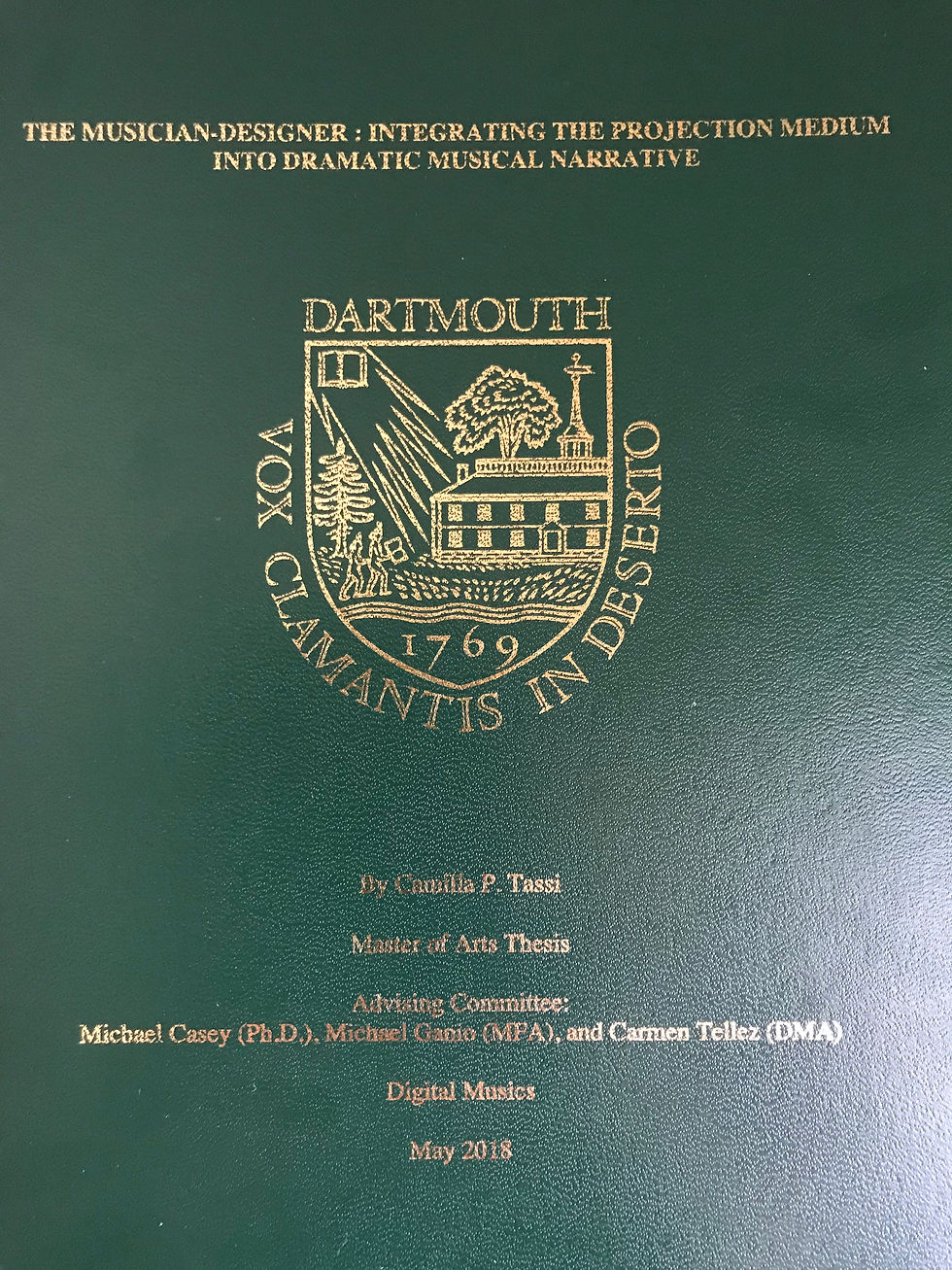Thesis Published: "The Musician-Designer"
- Camilla Tassi
- Jun 18, 2018
- 2 min read
As part of my Master's, I had the experience of writing a graduate thesis through the Digital Musics department at Dartmouth College. The work was published on ProQuest Dissertations and is titled The Musician-Designer: Integrating the Projection Medium into Dramatic Musical Narrative.
Through it, I explore projection design's history in the theater and particularly tie it to the technical innovations of Baroque period stagings. I also look at the work of professional designers in opera and analyze the music-based approach to design in own my practice in light of the components of projection: visual content, materiality/texture (how projection interacts with space/architecture) and animation (how projection interacts and reveals itself in time).

The advising committee consisted of a team of faculty in the areas of interdisciplinary performance, theater design, computer science/digital musics, and conducting: Dr. Michael Casey, Dr. Carmen-Helena Tellez, and Michael Ganio.
Abstract below:
Visual projections were first employed in theatrical performances by Erwin Piscator in Germany during the 1920s. Today, projection has emerged as a design field of its own and professional degree programs dedicated to its craft have begun to be instituted in colleges and universities. Yet, little has been written regarding how to approach projection as an artistic process and not a purely technical element. With the recent developments in projection mapping software (including the platform Isadora, first released in 2002), projection design has become more widely accessible. But what are the qualities that make projection unique from other mediums? Why, and how, should it be incorporated in performances? Projection is a tool located between the virtual and the physical world: it combines and assumes materiality, but is not bound by material constraints and appearances. It is the child of light and film. As a result, projection has become another powerful design element in the audiovisual performance setting, particularly in the theatrical, staged, environment.
Because of the rhythm and flexibility it can have in its mutation and presentation of content, projections offer interesting possibilities, particularly in collaborations with music, which are the focus of this thesis. I offer a history of projection as a genre and as a medium through the lens of opera. I then present how projection can help with the re-contextualization of musico-dramatic genres (oratorio, cantatas, opera) of both early and modern periods, and how it can enhance and transform the visual and psychological space of a performance. Case studies of professional designers in opera are referenced and analyzed (Wendall Harrington’s Werther, Ex Machina’s La Damnation de Faust, and William Kentridge’s The Nose). I then share three productions I have designed: composer Buxtehude’s Membra Jesu Nostri, Carissimi’s Jepthe, and Delinger’s Talk to Me Like the Rain, and describe the process for tackling projection design for musical, dramatic, and narrative goals. Factors such as visual focus, score analysis, layers of accessibility in language and culture, as well as incorporation of architectural space, materiality, and interactivity with the performers are all present in the audiovisual approach of projections in the process of bringing music to life.






















Comments